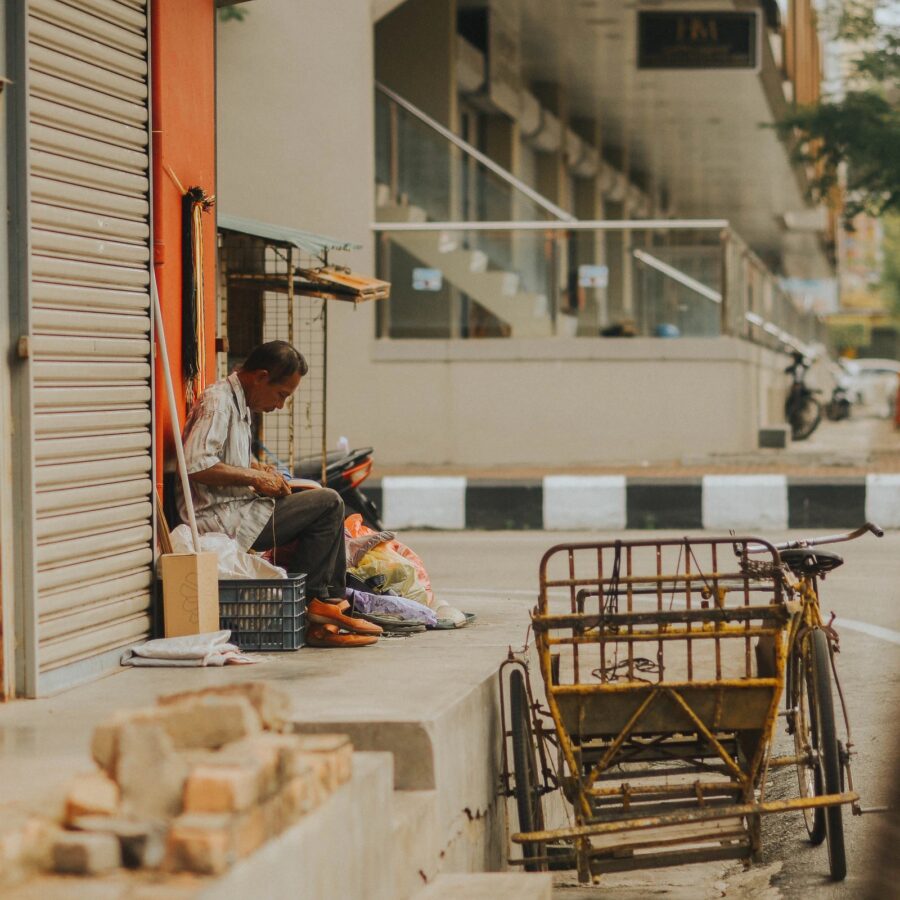It is a common phenomenon for people to buy too large shoes for them, increasing our day-to-day interactions with cobblers. By making tight-fitting shoes comfortable, tells that cobblers can make large-sized shoes fit you well. However, this can only be done to some extent, and not all large-sized shoes can be reduced to meet your needs.
Table of Contents
How Does A Cobbler Make Shoes Smaller?
Having understood that reducing the size of a shoe is possible to a greater extent, how is this achieved? Steps involved include:
Adding a gel padding to the ball of foot area
The first thing that a cobbler will inquire from you once you visit him is where the shoes feel large. The shoe may feel large in the ball of the foot, lengthwise, or the toe box may be too large. Adding extra padding to the ball of the foot area occupies a particular volume making the shoe fit more snugly.
Adding heel grips
Large-sized shoes tend to slip around the heels, and this may blister your feet. Adding heel grips will therefore make your shoes snugger. Heel grips have stickers that stick to the inside heel part of the shoes. Additionally, they also fit snugly from top to bottom, making them feel like part of the shoes. In this way, they eliminate any pressure felt while wearing the shoe. A cobbler only needs to reinforce this using a hammer.
Can A Cobbler Make Sandals Smaller?
It goes without saying that sandals are even much more manageable to reduce than shoes. The straps in the sandals can be tightened in two ways that include tucking them if they are too big or cutting them down to size then sewing them back.
How Can You Make Your Shoes Smaller Without Visiting A Cobbler?
You may sometimes buy shoes that may be too large or smaller and wonder how you can make them fit you without taking them to a cobbler. This may be as a result of urgency needed and therefore inadequate time to look for a cobbler. There are several ways of either increasing your shoe size or reducing the size. For instance, if the shoes are too small, you can stretch them out using the freezer.
On the other hand, if your shoes are too big, all is not lost because there are always alternatives. This can be achieved through:
Adding Dr Scholls inserts
Dr Scholl’s inserts are the most renowned brands in the shoe industry because their performance is always excellent. The inserts are thicker than the regular half soles, which are available all over. There
Fore after insertion, they take up much volume making your foot fit in the shoes snugly.
Dr Scholl’s half inserts are also removable, making it effortless during washing. Furthermore, they are made of gel, enhancing their stickiness while making the feet feel comfortable. Half inserts are especially useful in reducing sandals, dress shoes, casual shoes, and sneakers; however, it may be problematic with boots.
Using full soles
Full soles are crucial for various types of boots that may not be reduced by using half inserts. Dr Scholl’s full soles, made of gel, are available everywhere and may be appropriate for your working boots. Protalus and Superfeet insoles are also available to increase your choice in the market. However, if you want the best results, try full soles that are thicker enough to occupy more volume while at the same time leaving enough space for your feet.
Making a DIY Shoe filler
Shoe insert is very comfortable; however, they need to be changed after every six months, making them economically unfriendly. With DIY shoe filler, you can make them by yourself. They are affordable because materials for making them are readily available and at your disposal.
If your shoe is enormous in the toe box, it is very much easier because you only need to roll some tissue paper and insert it inside. However, you have to ensure that the roll is not too big to press your toe; therefore, it should allow some space for the toe. If you have old newspapers and wonder how you can utilize them, this might be the right time for them because they make the best toe box fillers.
To improve their effectiveness, you can use a combination of half or full inserts, heel grips and DIY shoe fillers.
Use of socks, Footies, and Tongue Pads
Using thick socks may be appropriate if your shoes are just a little loose. In cases of sneakers where you do not want to wear them with thick socks, then footie’s are the best for you as they hardly peek above the level of your shoes. You can also make the tongue of your shoes thick by buying a tongue pad and sticking them under it, making the tongue thick. Your shoes fit you snugly once you tighten the laces.
Shrinking the Shoes using Water
Certain types of shoes can be shrunk using water and leather conditioners. This works on the principle that air-drying wetted shoe results in shrinking, and this is a principle that has been used for many years. However, this should be done in the right ways to avoid damaging your shoes.
Various types of shoes require different techniques; for instance, Suede and leather shoes require a spray bottle, while athletic and casual shoes must be soaked in water. The shoes are allowed to sun-dry or dried using a hairdryer if the weather is cloudy. Once the shoes are dry, try to put them on, and for sure, you will notice a slight difference.
It is now evident that a cobbler can make shoes smaller to a greater extent based on the various ways discussed. Apart from this, you can reduce your shoe size on your own. The bottom line is the alteration of your shoe size does not interfere with the exterior dimensions of your shoes; therefore, you should walk in an appropriate posture when wearing these shoes.

